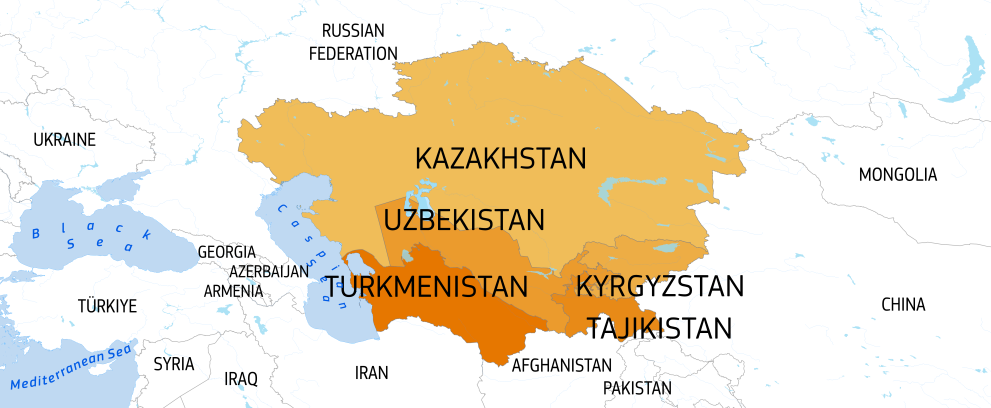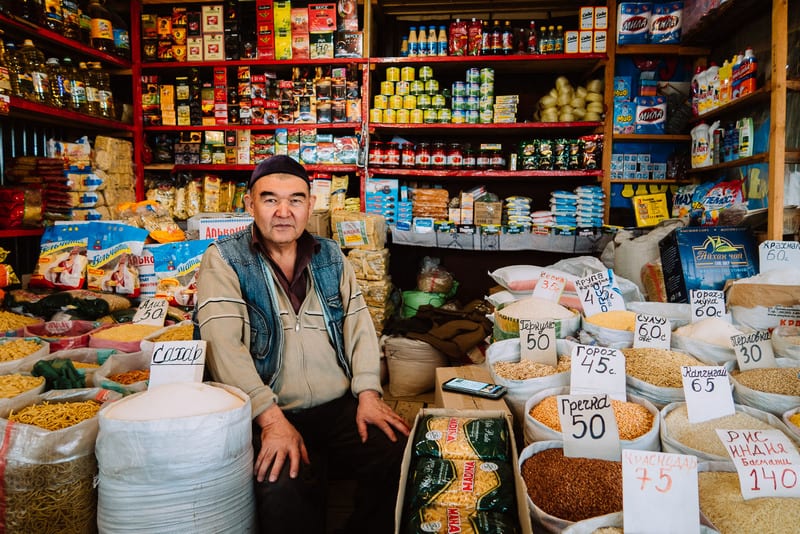Singaporean Companies on the Move: Expanding into Central Asia’s Thriving Markets
Singapore’s trade with Central Asia soared to an impressive SGD 1.2 billion in 2023, marking a robust 15% increase from the year before (Ministry of Trade and Industry Singapore, 2023).
That’s a clear signal of something exciting brewing. Singaporean companies are increasingly turning their sights towards Central Asia, a region brimming with untapped potential.
Why the sudden interest? This article dives into the factors fuelling this expansion, unpacking the opportunities waiting to be seized and the challenges to navigate. So, here’s your guide to understanding this emerging market.
Central Asia: A Region of Untapped Potential

Overview of Central Asia

In 2024, Central Asian countries show diverse economic growth:
- Kazakhstan: Projected GDP of USD 205 billion (SGD 272.65 billion), driven by infrastructure and diversification.
- Uzbekistan: GDP of USD 106 billion (SGD 140.98 billion), fueled by economic reforms and a 6% growth forecast from the Asian Development Bank.
- Kyrgyzstan: Expected GDP of USD 13.5 billion (SGD 17.95 billion) with a strong 9% growth, focusing on trade and small-scale industry.
- Tajikistan: GDP of USD 11 billion (SGD 14.63 billion), supported by remittances.
- Turkmenistan: GDP of USD 47 billion (SGD 62.51 billion), benefiting from energy exports.
Overall, Central Asia's 2024 economic outlook is one of growth and diversification, enhancing regional stability and prosperity.
Sources:
- Kyrgyzstan: 2024 GDP data by Eurasian Economic Commission.
- Uzbekistan: 2024 GDP figures are from the Asian Development Bank (ADB)
- Kazakhstan: 2024 GDP data by the European Bank for Reconstruction & Development (EBRD).
- Tajikistan and Turkmenistan: Numbers are informed by regional growth trends and EBRD reports.

Economic Growth and Diversification
The region is on the move. Central Asia has enjoyed steady economic growth, averaging 4.5% annually from 2018 to 2023 (World Bank, 2023).
But it’s not just about growth. These countries are diversifying too. They’re shifting away from relying solely on natural resources like oil and gas.
For example, Kazakhstan’s “Nurly Zhol” programme is boosting infrastructure to diversify its economy.
Uzbekistan, on the other hand, has rolled out reforms to liberalise its markets and attract foreign investment. This forward-thinking approach is opening new doors.

Rising Middle Class and Consumer Demand
Central Asia’s middle class is booming. Between 2010 and 2020, around 30 million people joined this group (Asian Development Bank, 2021).
That’s a huge shift. With more disposable income, demand for goods and services—like electronics, cars, and even luxury items—is surging. For Singaporean businesses, this growing consumer base is a golden opportunity to tap into.
Infrastructure Development
Central Asia is pouring money into projects that connect the region. The Central Asia Regional Economic Cooperation (CAREC) programme has invested almost USD 51 billion (SGD 67.83 billion) since 2001 (CAREC, 2023).
Think transportation networks, energy grids, and telecom upgrades. These developments are a magnet for companies in construction, technology, and logistics. The groundwork is being laid—literally—for business to thrive.

Drivers of Singaporean Expansion
Diversification Strategy
Singaporean companies are looking to spread their wings beyond familiar markets like China and Southeast Asia. Central Asia offers a fresh frontier.
With its growing population and consumer demand, it’s a chance to diversify and reduce risks tied to over-reliance on traditional partners.
Trade Agreements and Partnerships
Trade ties are strengthening. Singapore has inked key agreements, like the Singapore-Kazakhstan Bilateral Investment Treaty and the Eurasian Economic Union-Singapore Free Trade Agreement.
These deals smooth the way for business. Besides that, government initiatives are pushing collaboration.
For instance, Enterprise Singapore actively supports firms exploring these markets. It’s a solid foundation for growth.
Singapore’s Expertise and Value Proposition
Singapore brings a lot to the table. Think finance, technology, logistics, and urban planning—areas where we shine. Central Asia needs these skills.
Its cities are modernising, and its economies digitising. Singaporean firms can step in with solutions that match these demands perfectly.
Growing Diplomatic Relationships
Diplomacy is paving the way too. Singapore and Central Asian countries are building stronger ties.
Take Kazakhstan: Diplomatic relations began in 1993, and since then, high-level visits have multiplied. These connections foster trust and open doors for business partnerships.

Key Sectors of Opportunity
Technology and Digital Economy
Central Asia is going digital fast. Internet penetration jumped from 20% in 2010 to over 50% by 2023 (International Telecommunication Union, 2023). That’s a massive leap.
Singaporean tech firms can seize this moment. Whether it’s e-commerce platforms, digital solutions, or fintech services, the demand is there. The region’s young, tech-savvy population is ready for it.
Infrastructure and Urban Development
Big projects are underway. Central Asia is building transportation networks, energy systems, and smart cities. Singaporean companies excel in construction and urban planning.
They can offer expertise in project management or sustainable city designs. The potential here is enormous.
Renewable Energy
Green energy is gaining traction. Central Asia boasts abundant solar, wind, and hydro resources. Singaporean firms can bring cutting-edge technology and financing know-how to the table.
For instance, Kazakhstan aims to generate 15% of its energy from renewables by 2030 (IEA, 2022). That’s a clear opening.
Logistics and Supply Chain
Central Asia sits between Europe and Asia, making it a trade hub. However, logistics can be tricky with developing infrastructure. Singaporean companies, known for efficiency, can step in. They can streamline supply chains and boost connectivity.
Financial Services
The financial sector is ripe for growth. Central Asia’s banking systems are still maturing. Singaporean banks and institutions can offer trade finance, investment banking, and insurance. With our reputation as a financial hub, this is a natural fit.
| Sector | Opportunity | Singapore’s Strength |
|---|---|---|
| Technology | Digital solutions, fintech | Innovation, expertise |
| Infrastructure | Smart cities, transportation | Urban planning, construction |
| Renewable Energy | Solar, wind, hydro projects | Tech, financing |
| Logistics | Supply chain efficiency | Global logistics hub |
| Financial Services | Banking, trade finance | Financial hub status |
Challenges and Considerations
Cultural and Language Differences
Central Asia is diverse. Multiple languages and customs can feel overwhelming. Singaporean firms need to adapt. Investing in cultural training and language skills is key to building trust and strong local relationships.
Regulatory and Legal Environment
Rules can be complex. Each country has its own regulatory framework. Navigating this takes effort. Companies must do their homework and seek local legal advice. Thorough preparation avoids costly missteps.
Logistical Challenges
Infrastructure isn’t perfect yet. Transportation can be slow and costly. Firms need to plan for longer lead times. Flexibility and patience are essential here.
Geopolitical Considerations
The region has its risks. Political instability or regional tensions can flare up. Singaporean businesses should stay informed. Having contingency plans is a smart move to manage uncertainty.
Due Diligence
Don’t skip this step. Proper due diligence is critical. Research local partners, understand market dynamics, and assess risks. It’s the foundation for success in Central Asia.

Conclusion
Central Asia is a land of opportunity for Singaporean companies. From booming consumer markets to infrastructure projects, the potential is clear.
Sectors like technology, renewable energy, and logistics are wide open. Yet, challenges like cultural differences and geopolitical risks require careful handling.
Fortunately, with Singapore’s expertise and strategic approach, these hurdles can be overcome.
While the long-term rewards are worth it, remember to do due diligence as well. Strategic partnerships here can drive growth for years to come. So, to Singaporean professionals, entrepreneurs, and investors: consider Central Asia.
Let us know what you think about this topic, and what do you want to hear next.
You can now be our community contributor and make a pitch to have your favourite personality be on our show.
Join our community group and drop us your insights on this topic.

-3.png?width=50&name=Square%20(2)-3.png)








Let us know what you think of this post